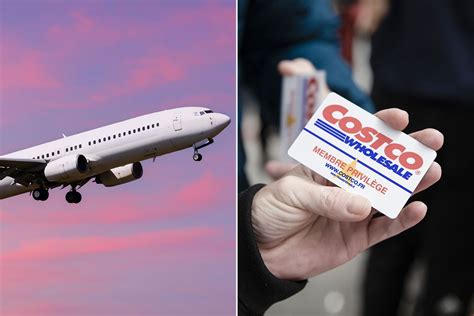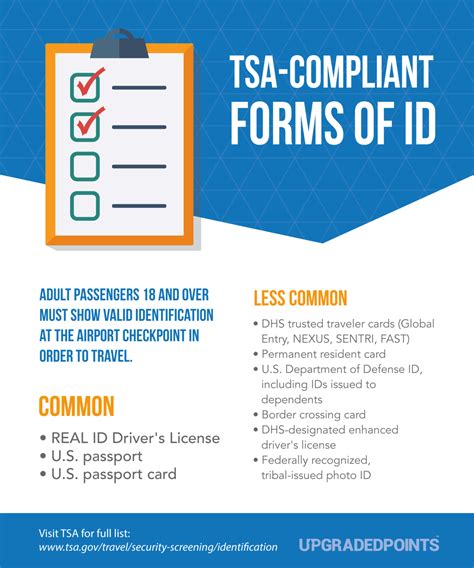
Costco membership cards are no longer acceptable forms of identification at airport security checkpoints, the Transportation Security Administration (TSA) has confirmed. The agency quietly removed Costco cards, along with several other less common forms of ID, from its list of acceptable identification. Travelers attempting to use these cards will be denied entry and required to provide an alternative form of approved identification.
The TSA periodically updates its list of acceptable identification documents, and this recent change, though unannounced, took effect immediately. While a valid passport, driver’s license, or military ID remain the most common and reliable forms of identification, the removal of options like Costco cards may catch some travelers off guard. The agency emphasizes that the change is part of ongoing efforts to enhance security measures and streamline the screening process.
The specific reason for the removal of Costco cards from the acceptable ID list wasn’t explicitly stated by the TSA in its official announcement, but security experts suggest that the cards’ lack of robust security features and ease of counterfeiting likely contributed to the decision. Unlike government-issued IDs, Costco cards lack the same level of verification and tamper-proofing measures, making them a potential security risk.
Travelers without acceptable identification face additional screening, which can include identity verification processes, questioning, and physical searches. The TSA advises passengers to ensure they have a valid and acceptable form of identification readily available before arriving at the airport to avoid delays and potential complications. The agency’s website provides a comprehensive list of acceptable forms of identification for domestic and international travel.
The removal of Costco cards from the list of acceptable IDs underscores the TSA’s commitment to maintaining stringent security protocols at airports. Passengers are encouraged to familiarize themselves with the updated guidelines and prepare accordingly to ensure a smooth and efficient travel experience. This change serves as a reminder that relying on non-standard identification documents can lead to unexpected challenges at airport security checkpoints.
The TSA website lists numerous acceptable forms of identification, including:
- U.S. passport
- U.S. passport card
- Driver’s licenses or other state photo identity cards issued by the Department of Motor Vehicles (or equivalent)
- Temporary driver’s license
- Enhanced Driver’s License
- U.S. military ID
- Permanent Resident Card (Green Card)
- Border Crossing Card
- DHS designated enhanced driver’s license
- Federally recognized, tribal-issued photo ID
- HSPD-12 PIV card
- Foreign government-issued passport
- Canadian provincial driver’s license or Indian and Northern Affairs Canada card
- Transportation Worker Identification Credential (TWIC)
- U.S. Citizenship and Immigration Services Employment Authorization Card (I-766)
- U.S. Merchant Mariner Credential
Background and Context:
The Transportation Security Administration (TSA) was established in the wake of the September 11, 2001, terrorist attacks to bolster security measures across the United States transportation systems. As part of its mandate, the TSA is responsible for screening passengers and baggage at airports, ensuring the safety and security of air travel.
Since its inception, the TSA has continuously evolved its security protocols and procedures in response to emerging threats and technological advancements. These ongoing efforts include refining screening techniques, deploying advanced imaging technology, and updating the list of acceptable identification documents.
The TSA’s identification verification process is a critical component of its overall security strategy. By requiring passengers to present valid identification, the TSA aims to confirm their identity and prevent unauthorized individuals from boarding aircraft. The agency’s list of acceptable identification documents is regularly reviewed and updated to reflect changes in security standards and evolving threats.
The decision to remove Costco cards from the list of acceptable IDs is consistent with the TSA’s broader efforts to enhance security measures and streamline the screening process. While Costco cards may be convenient for everyday purchases, they lack the security features and verification mechanisms required for secure identification at airport security checkpoints.
Security Concerns and Counterfeiting:
One of the primary reasons for the TSA’s decision to remove Costco cards from the list of acceptable IDs is the potential for counterfeiting and fraud. Unlike government-issued identification documents, Costco cards are relatively easy to replicate, making them vulnerable to misuse by individuals seeking to circumvent security measures.
Counterfeit identification documents pose a significant security risk to air travel, as they can be used to impersonate legitimate passengers and gain unauthorized access to aircraft. The TSA is committed to preventing the use of counterfeit IDs at airport security checkpoints and has implemented various measures to detect and deter fraudulent activity.
The TSA’s Secure Flight program, for example, compares passenger information against government watchlists to identify individuals who may pose a security risk. The agency also employs advanced technology, such as facial recognition software, to verify the identity of passengers and detect fraudulent documents.
By removing Costco cards from the list of acceptable IDs, the TSA aims to reduce the risk of counterfeit identification documents being used to gain access to aircraft. This decision is part of a broader effort to enhance security measures and protect air travel from potential threats.
Impact on Travelers:
The removal of Costco cards from the list of acceptable IDs may impact travelers who have relied on these cards as a form of identification at airport security checkpoints. Passengers who attempt to use Costco cards as identification will be denied entry and required to provide an alternative form of acceptable ID.
To avoid delays and potential complications, the TSA advises passengers to ensure they have a valid and acceptable form of identification readily available before arriving at the airport. The agency’s website provides a comprehensive list of acceptable forms of identification for domestic and international travel.
Travelers who do not have acceptable identification may be subject to additional screening, which can include identity verification processes, questioning, and physical searches. The TSA recommends that passengers without acceptable identification arrive at the airport early to allow ample time for these additional screening procedures.
The removal of Costco cards from the list of acceptable IDs underscores the importance of carrying valid and acceptable identification documents when traveling by air. Passengers are encouraged to familiarize themselves with the TSA’s identification requirements and prepare accordingly to ensure a smooth and efficient travel experience.
Alternative Forms of Identification:
The TSA accepts a wide range of identification documents at airport security checkpoints. Some of the most common and reliable forms of identification include:
- U.S. passport
- U.S. passport card
- Driver’s licenses or other state photo identity cards issued by the Department of Motor Vehicles (or equivalent)
- Temporary driver’s license
- Enhanced Driver’s License
- U.S. military ID
- Permanent Resident Card (Green Card)
- Border Crossing Card
- DHS designated enhanced driver’s license
- Federally recognized, tribal-issued photo ID
- HSPD-12 PIV card
- Foreign government-issued passport
- Canadian provincial driver’s license or Indian and Northern Affairs Canada card
- Transportation Worker Identification Credential (TWIC)
- U.S. Citizenship and Immigration Services Employment Authorization Card (I-766)
- U.S. Merchant Mariner Credential
Passengers are encouraged to choose a form of identification that is readily available and easy to present at airport security checkpoints. The TSA also recommends that passengers keep their identification documents in a safe and secure location to prevent loss or theft.
TSA’s Response to Criticism:
The TSA has faced criticism in the past for its security procedures and screening practices. Some critics argue that the agency’s security measures are overly intrusive and ineffective, while others contend that the TSA has not done enough to prevent terrorist attacks.
The TSA defends its security measures by emphasizing that they are designed to protect air travel from potential threats. The agency argues that its security procedures are constantly evolving to address emerging threats and technological advancements.
The TSA also points to the fact that there have been no successful terrorist attacks on U.S. airlines since the September 11, 2001, attacks. The agency credits its security measures with playing a significant role in preventing such attacks.
The TSA acknowledges that its security procedures can be inconvenient for travelers, but it emphasizes that these procedures are necessary to ensure the safety and security of air travel. The agency is committed to working with travelers to minimize disruptions and provide a smooth and efficient screening experience.
Future of Airport Security:
The future of airport security is likely to be shaped by technological advancements and evolving threats. The TSA is exploring new technologies, such as biometric identification and advanced imaging technology, to enhance security measures and streamline the screening process.
Biometric identification, such as facial recognition and iris scanning, could be used to verify the identity of passengers more quickly and accurately. Advanced imaging technology could be used to detect concealed weapons and explosives without requiring passengers to remove their shoes or belts.
The TSA is also working to improve its intelligence gathering and analysis capabilities to better identify potential threats. The agency is collaborating with law enforcement agencies and intelligence organizations to share information and coordinate security efforts.
The goal of these efforts is to create a more secure and efficient airport security system that protects air travel from potential threats while minimizing disruptions for passengers.
Expert Opinions:
Security experts agree that the TSA’s decision to remove Costco cards from the list of acceptable IDs is a sensible security measure. They argue that Costco cards lack the security features and verification mechanisms required for secure identification at airport security checkpoints.
“Costco cards are simply not designed to be used as a form of identification,” said a security analyst at a leading security consulting firm. “They are easy to counterfeit and do not provide a reliable means of verifying a person’s identity.”
Other security experts have echoed this sentiment, emphasizing the importance of using government-issued identification documents for air travel. They argue that government-issued IDs are more secure and reliable than non-government-issued IDs.
“Government-issued IDs are subject to rigorous security standards and verification procedures,” said a former TSA official. “They are the most reliable way to verify a person’s identity and prevent unauthorized individuals from boarding aircraft.”
The TSA’s decision to remove Costco cards from the list of acceptable IDs is consistent with the recommendations of security experts and reflects the agency’s commitment to maintaining stringent security protocols at airports.
The Importance of Preparedness:
The TSA’s policy change regarding acceptable identification at airports underscores the importance of preparedness for travelers. Being informed about the latest regulations and guidelines can help ensure a smoother, less stressful airport experience.
Travelers should regularly check the TSA’s website or mobile app for updates on acceptable forms of identification and any other relevant security procedures. Planning ahead and having the appropriate documents readily available can prevent unnecessary delays and potential complications at security checkpoints.
Furthermore, travelers should be aware of the potential for enhanced screening procedures, especially if they do not have acceptable identification or if they trigger an alarm during the screening process. Cooperating with TSA officers and following their instructions can help expedite the screening process and minimize any inconvenience.
By staying informed and being prepared, travelers can contribute to a more secure and efficient airport environment for everyone.
TSA PreCheck and Global Entry:
For frequent travelers, programs like TSA PreCheck and Global Entry offer expedited security screening and customs processing. These programs require a background check and application process, but they can significantly reduce wait times and improve the overall travel experience.
TSA PreCheck allows eligible travelers to go through expedited security lanes, where they do not have to remove their shoes, belts, or light jackets. Global Entry provides expedited customs processing for international travelers returning to the United States.
Both programs are administered by the Department of Homeland Security and are designed to enhance security while facilitating legitimate travel. Travelers who are interested in these programs can apply online and schedule an interview at an enrollment center.
Participation in TSA PreCheck and Global Entry can make air travel more convenient and efficient, especially for frequent travelers who value their time.
Future Changes and Considerations:
The TSA’s list of acceptable identification documents is subject to change as security threats evolve and new technologies emerge. Travelers should stay informed about any updates to the TSA’s policies and procedures to ensure they are prepared for air travel.
The TSA is also considering implementing new technologies, such as biometric identification, to enhance security measures and streamline the screening process. These technologies could potentially replace or supplement traditional forms of identification in the future.
As airport security continues to evolve, travelers should remain adaptable and willing to comply with new regulations and procedures. By working together, the TSA and travelers can help create a more secure and efficient air travel system for everyone.
Conclusion:
The TSA’s decision to remove Costco cards from its list of acceptable identification at airport security checkpoints reflects the agency’s ongoing efforts to enhance security measures and streamline the screening process. While this change may inconvenience some travelers, it is consistent with the TSA’s broader commitment to protecting air travel from potential threats.
Passengers are encouraged to familiarize themselves with the updated guidelines and ensure they have a valid and acceptable form of identification readily available before arriving at the airport. By staying informed and being prepared, travelers can contribute to a more secure and efficient airport environment for everyone. The agency’s decision is rooted in the need for more secure, government-vetted identification methods to bolster airport safety. As the threat landscape continues to evolve, so too will the measures taken to safeguard air travel.
Frequently Asked Questions (FAQ):
Q1: Why did the TSA ban Costco cards as a form of ID?
A1: The TSA has not explicitly stated the reason, but security experts believe it is due to the cards’ lack of robust security features and the ease with which they can be counterfeited. Unlike government-issued IDs, Costco cards do not have the same level of verification and tamper-proofing.
Q2: What forms of identification are still acceptable at TSA checkpoints?
A2: A wide range of identification documents are acceptable, including U.S. passports, U.S. passport cards, driver’s licenses or other state photo identity cards, U.S. military IDs, Permanent Resident Cards (Green Cards), and foreign government-issued passports, among others. A complete list is available on the TSA website.
Q3: What happens if I arrive at the airport with only a Costco card as identification?
A3: You will be denied entry through the standard security checkpoint and will be required to provide an alternative form of acceptable identification. If you do not have acceptable identification, you may be subject to additional screening, which can include identity verification processes, questioning, and physical searches.
Q4: Does this ban affect TSA PreCheck or Global Entry members?
A4: TSA PreCheck and Global Entry members are still required to present valid identification, but the process is typically faster and more streamlined. The ban on Costco cards applies to all travelers, regardless of membership in these programs. However, enrollment in PreCheck and Global Entry requires providing government-issued identification and undergoing background checks.
Q5: Where can I find a complete list of acceptable identification documents for air travel?
A5: A complete list of acceptable identification documents is available on the Transportation Security Administration (TSA) website (www.tsa.gov). You can also find this information on the TSA mobile app. It’s always a good idea to check the TSA website before you travel to ensure you have the most up-to-date information on acceptable forms of ID.









